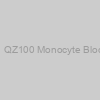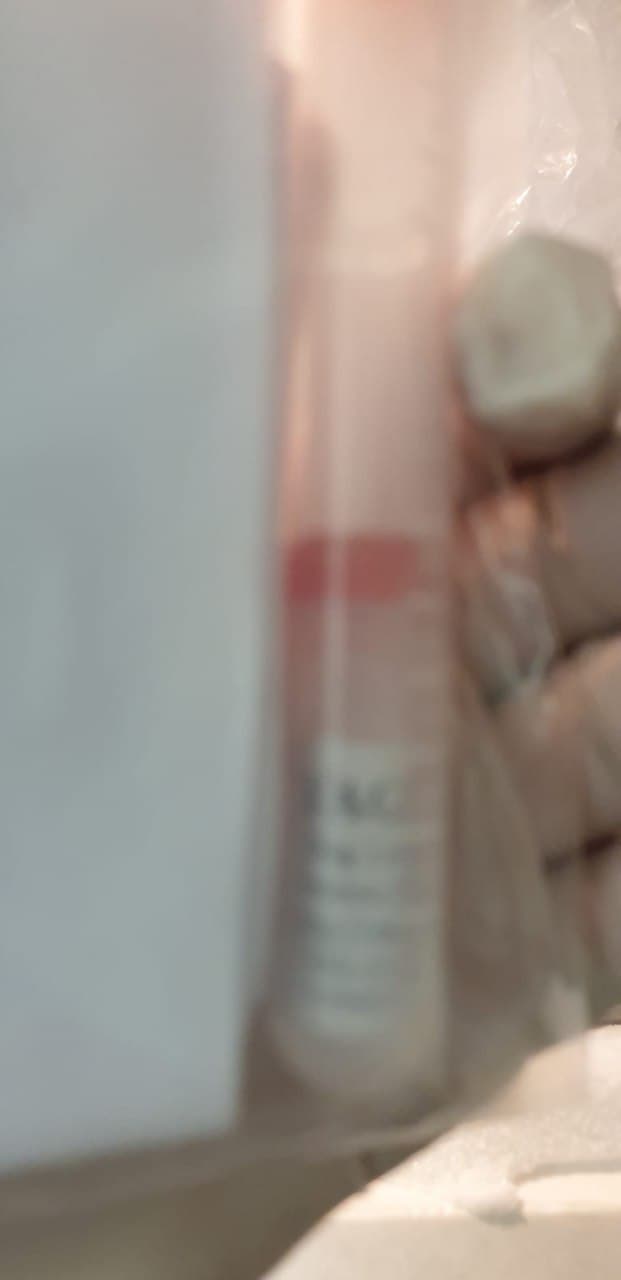The “omics,” high-throughput screening, computational modeling, and database mining revolutions have every arrived with euphoric expectations, appreciable hand waving, and guarantees to set toxicity testing priorities and scale back reliance on standard animal toxicity and carcinogenicity testing. Reflecting again on prior expertise with different predictive approaches and options, what follows the frenzy to endorse a promising new know-how or totally different method to toxicity/carcinogenicity testing is years of grinding out knowledge for validation and optimization. A lot of what has pushed the keenness for every new rising know-how and method is the pricey, labor-intensive, and typically irrelevant and inefficient rodent bioassay-testing paradigm.
Nonetheless, nobody ought to anticipate abandonment of all animal testing for the foreseeable future, particularly for agrochemicals and environmental xenobiotic exposures. It’s cheap to anticipate the longer term will deliver nonetheless new approaches to security testing and human threat evaluation. Previously, every new method has not achieved the inflated expectations for security testing and human threat evaluation however typically has change into a helpful analysis device with tangible contributions to primary biology and scientific medication.
The toxicologic pathologist is embedded within the matrix of a combined disciplinary milieu and is confronted with some important challenges and essential alternatives within the postgenomic many years forward. So what recommendation can we give to the journeyman toxicologic pathologist who will hopefully operate successfully within the postgenomic many years forward? And what recommendation can we additionally give to the skilled bench pathologist confronted with rising applied sciences every accompanied by a bewildering array of techno-jargon in order that she or he can stay efficient as a toxicologic pathology practitioner?
Postgenomic approaches to utilizing corynebacteria as biocatalysts.
Corynebacterium glutamicum reveals quite a few superb intrinsic attributes as a manufacturing unit of major and secondary metabolites. The versatile capabilities of this organism have lengthy been carried out on the industrial scale to provide an array of amino acids at excessive yields and conversion charges, thereby enabling the event of a whole {industry}. The postgenomic period supplies a brand new technological platform not solely to additional optimize the intrinsic attributes of C. glutamicum entire cells as biocatalysts, but additionally to dramatically develop the product portfolio that may be manufactured by this organism, from amino acids to commodity chemical compounds.
This overview addresses the strategies and pressure optimization methods enabled by genomic info and related methods. Their implementation has offered essential further incremental enhancements to the economics of industry-scale manufacturing wherein C. glutamicum and its episomal parts are used as a performing host-vector system.Regardless of the speedy development of postgenomic knowledge and fast-paced know-how development, drug discovery continues to be a prolonged and troublesome course of. Simpler drug design requires a greater understanding of the interplay between drug candidates and their targets/off-targets in numerous conditions.
The flexibility of chemical proteomics to combine a multiplicity of disciplines allows the direct evaluation of protein actions on a proteome-wide scale, which has huge potential to facilitate drug goal elucidation and lead drug verification. Over current years, chemical proteomics has skilled speedy development and offered a helpful technique for drug goal identification and inhibitor discovery. This overview introduces primary ideas and applied sciences of various standard chemical proteomic approaches. It additionally covers the important options and up to date advances of every method whereas underscoring their potentials in drug discovery and improvement.
Prediction of protein area with mRMR characteristic choice and evaluation.
The domains are the structural and practical items of proteins. With the avalanche of protein sequences generated within the postgenomic age, it’s extremely desired to develop efficient strategies for predicting the protein domains in line with the sequences info alone, in order to facilitate the construction prediction of proteins and velocity up their practical annotation. Nonetheless, though many efforts have been made on this regard, prediction of protein domains from the sequence info nonetheless stays a difficult and elusive downside. Right here, a brand new technique was developed by combing the methods of RF (random forest), mRMR (most relevance minimal redundancy), and IFS (incremental characteristic choice)
in addition to by incorporating the options of physicochemical and biochemical properties, sequence conservation, residual dysfunction, secondary construction, and solvent accessibility. The general success price achieved by the brand new technique on an unbiased dataset was round 73%, which was about 28-40% increased than these by the prevailing technique on the identical benchmark dataset. Moreover, it was revealed by an in-depth evaluation that the options of evolution, codon range, electrostatic cost, and dysfunction performed extra essential roles than the others in predicting protein domains, fairly per experimental observations.
 HAMA blocking reagent |
|
85R-1001P |
Fitzgerald |
1 gram |
EUR 150 |
|
|
|
Description: HAMA Blocking Reagent for use in immunoassays such as ELISA |
 HAMA blocking reagent |
|
85R-1003 |
Fitzgerald |
1 gram |
EUR 150 |
|
|
|
Description: HAMA Blocking Reagent for use in immunoassays such as Rapid Tests |
 HAMA blocking reagent |
|
85R-1014 |
Fitzgerald |
50 mg |
EUR 2000 |
|
|
|
Description: HAMA blocking reagent for use in assays specific for clinical false positive samples |
 HAMA blocking reagent |
|
85R-1025 |
Fitzgerald |
50 mg |
EUR 2000 |
|
|
|
Description: HAMA blocking reagent for use in immunoassays |
 HAMA blocking reagent |
|
85R-1026 |
Fitzgerald |
50 mg |
EUR 2000 |
|
|
|
Description: HAMA blocking reagent for use in immunoassays |
 PEROXIDE BLOCKING REAGENT Reagent |
|
GWB-Q00308 |
GenWay Biotech |
50 ml |
Ask for price |
 AVIDIN/BIOTIN BLOCKING REAGENT Reagent |
|
GWB-Q00289 |
GenWay Biotech |
30 ml |
Ask for price |
 FcR Blocking Reagent |
|
FCR-2ML |
ImmunoStep |
200 test |
EUR 170.5 |
|
Description: FcR |
 FcR Blocking Reagent |
|
FCR-4ML |
ImmunoStep |
400 test |
EUR 282.7 |
|
Description: FcR |
 FcR blocking Reagent |
|
20-abx290024 |
Abbexa |
-
Ask for price
-
Ask for price
|
|
|
|
 Mouse IgG Blocking Reagent |
|
30R-AH071 |
Fitzgerald |
20 mg |
EUR 219 |
|
|
|
Description: Mouse IgG (H + L) Blocking Reagent |
 PhosphoBlocker™ Blocking Reagent |
|
AKR-103 |
Cell Biolabs |
1L |
EUR 265 |
 PhosphoBlocker™ Blocking Reagent |
|
AKR-104 |
Cell Biolabs |
4L |
EUR 630 |
 CytoWatchâ„¢ QZ100 Monocyte Blocking Reagent |
|
37000-100Test |
AAT Bioquest |
100 Test |
EUR 79 |
|
|
|
Description: Some dye-labeled fluorescent antibody conjugates used in cell surface staining of live cells often exhibit non-specific binding in monocytes and macrophages. |
 CytoWatchâ„¢ QZ100 Monocyte Blocking Reagent |
|
37001-500Test |
AAT Bioquest |
500 Test |
EUR 412 |
|
|
|
Description: Some dye-labeled fluorescent antibody conjugates used in cell surface staining of live cells often exhibit non-specific binding in monocytes and macrophages. |
 Corning 3D Clear Starter Kit - Includes Reagent/Antibody Buffer/Blocking Buffer/Penetration Buffer/Washing Buffers - EACH |
|
5730 |
Scientific Laboratory Supplies |
EACH |
EUR 1074.6 |
 ELISA BSA BLOCK Reagent |
|
GWB-Q00212 |
GenWay Biotech |
100 ml |
Ask for price |
 ELISA BSA BLOCK Reagent |
|
GWB-Q00213 |
GenWay Biotech |
500 ml |
Ask for price |
 ELISA BSA BLOCK Reagent |
|
GWB-Q00214 |
GenWay Biotech |
1000 ml |
Ask for price |
 Block-Free ELISA Reagent |
|
M4102-250 |
Biovision |
each |
EUR 542.4 |
 Block-Free ELISA Reagent |
|
M4102-50 |
Biovision |
each |
EUR 176.4 |
) Block-Free ELISA Reagent (Protein-Free) |
|
M4101-250 |
Biovision |
each |
EUR 548.4 |
) Block-Free ELISA Reagent (Protein-Free) |
|
M4101-50 |
Biovision |
each |
EUR 183.6 |
) Gordon-McLeod Reagent (Oxidase reagent) |
|
R026-100ML |
EWC Diagnostics |
1 unit |
EUR 7.76 |
|
Description: Gordon-McLeod Reagent (Oxidase reagent) |
 MTS Reagent |
|
2808-1000 |
Biovision |
each |
EUR 1188 |
 BOP reagent |
|
A7015-100000 |
ApexBio |
100 g |
EUR 104 |
|
|
|
Description: Peptide coupling reagent |
 BOP reagent |
|
A7015-25000 |
ApexBio |
25 g |
EUR 44 |
|
|
|
Description: Peptide coupling reagent |
 TDA Reagent |
|
R036-10ML |
EWC Diagnostics |
1 unit |
EUR 5.22 |
|
Description: TDA Reagent |
 PYR Reagent |
|
R043-10ML |
EWC Diagnostics |
1 unit |
EUR 12.02 |
|
Description: PYR Reagent |
 100 BlotBot Reagent Reservoirs |
|
RRVR-100 |
Next Advance |
100pack |
EUR 212.4 |
|
Description: BlotBot reagent reservoirs will allow dispensing of unique reagents during processing. Pack of 100. |
 500 BlotBot Reagent Reservoirs |
|
RRVR-500 |
Next Advance |
500pack |
EUR 640.8 |
|
Description: BlotBot reagent reservoirs will allow dispensing of unique reagents tray during processing. Pack of 500. |
 Traut's Reagent |
|
2330-1000 |
Biovision |
each |
EUR 418.8 |
 Traut's Reagent |
|
2330-500 |
Biovision |
each |
EUR 248.4 |
 VeZol Reagent |
|
R411-01 |
Vazyme |
100 ml |
EUR 76.4 |
 VeZol Reagent |
|
R411-02 |
Vazyme |
200 ml |
EUR 127.6 |
 O’Meara Reagent |
|
R031-100ML |
EWC Diagnostics |
1 unit |
EUR 5.56 |
|
Description: O’Meara Reagent |
 DMACA Reagent |
|
R035-10ML |
EWC Diagnostics |
1 unit |
EUR 9.92 |
|
Description: DMACA Reagent |
 Folin's Reagent |
|
ML059-125ML |
EWC Diagnostics |
1 unit |
EUR 31.47 |
|
Description: Folin's Reagent |
 Folin's Reagent |
|
ML059-250ML |
EWC Diagnostics |
1 unit |
EUR 57.09 |
|
Description: Folin's Reagent |
 Schiff's Reagent |
|
40120082-1 |
Glycomatrix |
100 mL |
EUR 35.14 |
 Schiff's Reagent |
|
40120082-2 |
Glycomatrix |
500 mL |
EUR 54.54 |
 Topfer Reagent |
|
R021-100ML |
EWC Diagnostics |
1 unit |
EUR 4.44 |
|
Description: Topfer Reagent |
 Millon's Reagent |
|
R097-2.5L |
EWC Diagnostics |
1 unit |
EUR 1266.85 |
|
Description: Millon's Reagent |
 Millon's Reagent |
|
R097-250ML |
EWC Diagnostics |
1 unit |
EUR 127.81 |
|
Description: Millon's Reagent |
 Millon's Reagent |
|
R097-500ML |
EWC Diagnostics |
1 unit |
EUR 228.41 |
|
Description: Millon's Reagent |
 Marfey’s reagent |
|
RM10585-100MG |
EWC Diagnostics |
1 unit |
EUR 229.58 |
|
Description: Marfey’s reagent |
 Biuret Reagent |
|
ML122-100ML |
EWC Diagnostics |
1 unit |
EUR 14.29 |
|
Description: Biuret Reagent |
 Biuret Reagent |
|
ML122-500ML |
EWC Diagnostics |
1 unit |
EUR 57.28 |
|
Description: Biuret Reagent |
 Chymase reagent |
|
30C-CP1129 |
Fitzgerald |
5 units |
Ask for price |
|
|
|
Description: Purified native Human Chymase reagent |
 FreeZol Reagent |
|
R711-01 |
Vazyme |
100 ml |
EUR 71.2 |
 FreeZol Reagent |
|
R711-02 |
Vazyme |
200 ml |
EUR 127.2 |
 Cleland’s reagent |
|
RM525-1G |
EWC Diagnostics |
1 unit |
EUR 7.62 |
|
Description: Cleland’s reagent |
 Cleland’s reagent |
|
RM525-25G |
EWC Diagnostics |
1 unit |
EUR 97.95 |
|
Description: Cleland’s reagent |
 Cleland’s reagent |
|
RM525-5G |
EWC Diagnostics |
1 unit |
EUR 24.53 |
|
Description: Cleland’s reagent |
 Nessler’s Reagent |
|
R010-125ML |
EWC Diagnostics |
1 unit |
EUR 3.33 |
|
Description: Nessler’s Reagent |
 Nessler’s Reagent |
|
R017-100ML |
EWC Diagnostics |
1 unit |
EUR 4.88 |
|
Description: Nessler’s Reagent |
 Fouchet’s Reagent |
|
R018-125ML |
EWC Diagnostics |
1 unit |
EUR 4.3 |
|
Description: Fouchet’s Reagent |
 Cleland’s reagent |
|
GRM359-1G |
EWC Diagnostics |
1 unit |
EUR 25.09 |
|
Description: Cleland’s reagent |
 Cleland’s reagent |
|
GRM359-5G |
EWC Diagnostics |
1 unit |
EUR 112.91 |
|
Description: Cleland’s reagent |
 Bradford reagent |
|
BDE641 |
Bio Basic |
100ml |
EUR 73.21 |
|
|
 Beaucage reagent |
|
C6991-1000 |
ApexBio |
1g |
EUR 84 |
|
|
 Beaucage reagent |
|
C6991-250 |
ApexBio |
250mg |
EUR 40 |
|
|
 Lawesson's reagent |
|
T20652-10mg |
TargetMol Chemicals |
10mg |
Ask for price |
|
|
|
Description: Lawesson's reagent |
 Lawesson's reagent |
|
T20652-1g |
TargetMol Chemicals |
1g |
Ask for price |
|
|
|
Description: Lawesson's reagent |
 Lawesson's reagent |
|
T20652-1mg |
TargetMol Chemicals |
1mg |
Ask for price |
|
|
|
Description: Lawesson's reagent |
 Lawesson's reagent |
|
T20652-50mg |
TargetMol Chemicals |
50mg |
Ask for price |
|
|
|
Description: Lawesson's reagent |
 Lawesson's reagent |
|
T20652-5mg |
TargetMol Chemicals |
5mg |
Ask for price |
|
|
|
Description: Lawesson's reagent |
 Beaucage reagent |
|
T14522-10mg |
TargetMol Chemicals |
10mg |
Ask for price |
|
|
|
Description: Beaucage reagent |
 Beaucage reagent |
|
T14522-1mg |
TargetMol Chemicals |
1mg |
Ask for price |
|
|
|
Description: Beaucage reagent |
It’s anticipated that the brand new technique could change into a high-throughput device in annotating protein domains, or could, on the very least, play a complementary function to the prevailing area prediction strategies, and that the findings about the important thing options with excessive impacts to the area prediction may present helpful insights or clues for additional experimental investigations on this space. Lastly, it has not escaped our discover that the present method can be utilized to review protein sign peptides, B-cell epitopes, HIV protease cleavage websites, amongst many different essential subjects in protein science and biomedicine.


